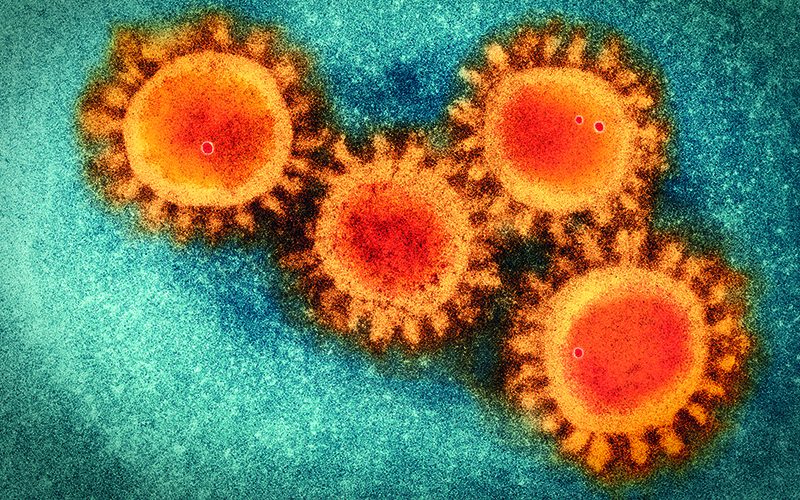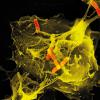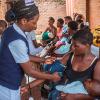Dr David Strain, a Senior Clinical Lecturer, is heading up the British Medical Association’s work on the long-term impact of COVID-19. Here he explains what we know so far about long COVID.

One of the more puzzling phenomena to emerge from the coronavirus pandemic has been that of long COVID. The condition is characterised by chronic, often debilitating, symptoms that a small number of people who have had the virus continue to experience weeks and even months after the main phase of the disease has passed – they can suffer from persistent coughing and shortness of breath, muscle fatigue, lethargy and headaches, gastrointestinal problems, and damage to the liver and heart. Some people also report depression and PTSD.
The COVID Symptom Study at King’s College London found that while most people who become unwell with the virus recover fully after 11 days, an estimated one in seven will remain ill for at least four weeks, one in 20 for eight weeks and one in 45 for 12 weeks or more. It also found that older people are more likely to get long COVID – 22% of over 70s, compared with 10% of 18-49 year olds. Those with a slightly higher than average BMI are more susceptible, as are people with asthma. Women are also slightly more likely to experience long COVID than men.
Looking at cul-de-sacs
What’s going on? One of the people who has been looking more closely at long COVID is Dr David Strain, Senior Clinical Lecturer at the University of Exeter Medical School and Co-Chair of the BMA’s Medical Academic Staff Committee. He has also been working on the COVID ward for older adults at the Royal Devon & Exeter NHS Foundation Trust since the start of the pandemic.
“In the world before COVID I was part of a multidisciplinary team that was looking at chronic fatigue syndrome. That’s a post-viral myalgia that causes all sorts of problems for a small proportion of the population,” he says. “We very quickly realised that there is something very similar going on with COVID and so tried to keep that work going. I was already looking at doing some research into chronic fatigue syndrome, particularly at the associated muscle wasting, which is much like the muscle wasting we see in older people.”
Strain’s pre-COVID research interest focused on the microcirculation in the human body’s tiniest blood vessels, which are responsible for delivering all the necessary oxygen and nutrients to the muscles. Since the onset of the pandemic, he has continued to look closely at the microcirculation.
“When we think about the blood supply, we tend to think about the bigger vessels,” he says. “They’re effectively the motorways of the body. But my focus has always been on the cul-de-sacs – the bits that get you from the motorway to your house. That’s the bit of the body I have always been interested in and we were working on this hypothesis that chronic fatigue syndrome was caused by a lack of perfusion in those vessels to the muscles and other tissues, which resulted in the muscle weakness and general tiredness and lethargy that we see.
“It has also been very well characterised that our patients with COVID got lots of damage to their small blood vessels. We saw a lot of very small blood clots alongside the more evident problems of kidney failure, the pulmonary strokes and so on. So we rapidly realised that a number of patients were being racked by some sort of chronic fatigue syndrome.”
Genetic make-up
Strain is now working with a group of geneticists in a bid to determine what genetic make-up might predispose somebody to suffer from long COVID. He’s also looking to set up studies that will investigate the potential physiological factors that are involved in the long-term symptoms. While these pieces of research are still at the development stage, people suffering from long COVID can do little more than sit it out.
“In this situation, time is the healer,” says Strain, “and there are large numbers of people who are getting better.” He bases this statement partly on the evidence gleaned from his work with the BMA Academic Staff Committee, which sent out a COVID survey to doctors during the first wave of the pandemic and has just started again as the second wave has begun to hit.
“One of the questions we ask is, ‘Have you had COVID and have you been left with long-term COVID-type symptoms?’ We’ve seen that around 20% of doctors who have had COVID were left with long symptoms beyond the month. But we’ve also found that those numbers then decline rapidly, with about only 3% going on for longer than a month.”
Multidisciplinary approach
For most patients on the COVID ward at the Royal Devon & Exeter who are older adults, the concerns are more immediate, though they are in the hands of a team that looks to address every aspect of the complex issues that older people can face. “We closely evaluate them because COVID is often just one of many conditions they can have, such as heart disease, previous strokes and mental health needs. The nurses, physiotherapists, occupational therapists, discharge coordinators and geriatrics team meet daily to discuss patients and to decide out who needs what. We think this multidisciplinary approach has made a big difference. It has been unusual for our patients to get to the cytokine storm stage. I saw it seven or eight times at most during the first wave.”
They are now starting to see the second wave, which seems to have hit the south west suddenly. “It has taken us a bit by surprise,” says Strain, though he also feels they are better prepared for dealing with the effects of the virus. “Doing the ward rounds today, I saw 20 patients who are acutely unwell with COVID, but it’s now easier to say who is over the worst of it or who is having a second dip. In those cases, we know what to expect and how to support them. We are part of several ongoing studies, and convalescent plasma appears to make a big difference, as does simple dexamethasone.”

- Senior Clinical Lecturer, University of Exeter; Honorary Consultant, Royal Devon & Exeter NHS Foundation Trust
- MB ChB, Liverpool
- BSc(Hons), FRCP, MD (London)
Dr David Strain, a Senior Clinical Lecturer, is heading up the British Medical Association’s work on the long-term impact of COVID-19. Here he explains what we know so far about long COVID.
Image Credit: iStock




